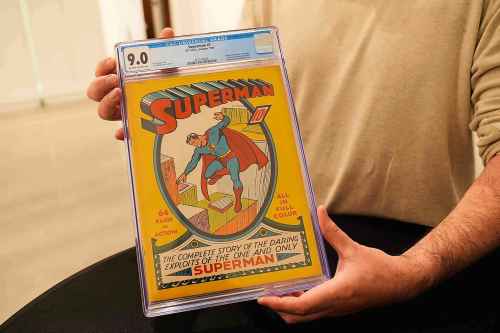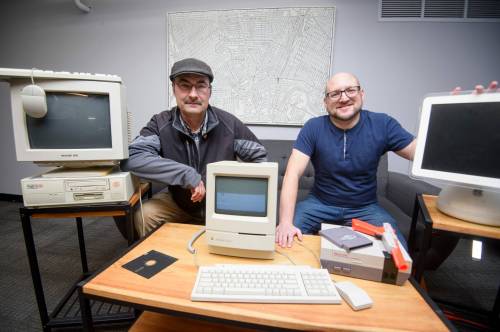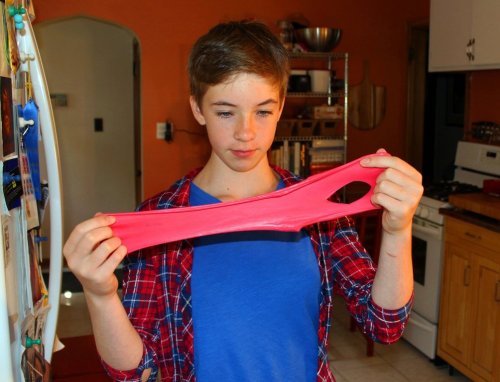Youth culture
Please review each article prior to use: grade-level applicability and curricular alignment might not be obvious from the headline alone.
Australia will enforce a social media ban for children under 16 despite a court challenge
3 minute read Preview Updated: Yesterday at 4:57 AM CSTVideo, photography, content-creation course puts focus on quality
4 minute read Preview Monday, Nov. 24, 2025It’s a bird! It’s a plane! It’s a rare Superman comic book! And it fetched $9.12M!
3 minute read Preview Wednesday, Nov. 26, 2025Is it just me? Or is swearing on the rise, on television, in print, in our daily lives?
Toronto Blue Jays manager, John Schneider, let loose a few F-bombs during the Jays’ recent playoff run. Former Blue Bomber star Jermarcus Hardrick, in town to play for Saskatchewan in the Grey Cup, revealed the meaning of the tattoo on his forearm from his Grey Cup wins in Winnipeg.
The tattoo features the Grey Cup, the Bomber logo and the letters, FIFO, which stands for “Fit in or F-off.”
I expect few are surprised that the sports locker room remains fertile ground for swearing. What is surprising, at least to me, is the steady rise in so-called “colourful language” in public settings, including mainstream media, and of course social media platforms.
Un programme qui ouvre la voie
5 minute read Preview Saturday, Nov. 22, 2025Child advocates urge government to bring back online harms legislation
4 minute read Preview Friday, Nov. 21, 2025Sony, Warner and Universal sign AI music licensing deals with startup Klay
3 minute read Preview Friday, Nov. 21, 2025Harvest Manitoba expands weekend snack program in province
3 minute read Preview Tuesday, Nov. 18, 2025New Manitoba Computer and Gaming Museum powers up
4 minute read Preview Monday, Nov. 17, 2025Reconnecting with an old friend is a story of distance, loss and rediscovery
7 minute read Preview Tuesday, Nov. 18, 2025Starting strong: building habits for great career, reputation in work world
7 minute read Preview Saturday, Nov. 15, 2025Influencers have more reach on 5 major platforms than news media, politicians: report
5 minute read Preview Friday, Nov. 14, 2025High score: Winnipeg Video Game Orchestra goes from joysticks to drumsticks
5 minute read Preview Monday, Nov. 10, 2025Artificial art a threat to human creativity
5 minute read Preview Sunday, Nov. 9, 2025Slime, Battleship and Trivial Pursuit join the Toy Hall of Fame
3 minute read Preview Monday, Nov. 10, 2025Probe flags troubles in literacy education
5 minute read Preview Monday, Nov. 3, 2025Trustees want say in school zone redesign
6 minute read Preview Friday, Oct. 31, 2025Dictionary.com’s word of the year is ‘6-7.’ But is it even a word and what does it mean?
3 minute read Preview Friday, Oct. 31, 2025When the internet first arrived in the mid-1990s, it screeched. Literally.
It screamed its way into our homes through the telephone lines, a metallic cry that sounded like the future forcing its way through. We waited through the static, convinced that life was about to get easier. People said it would save us time, let us work from home and give us more hours with our families.
No one mentioned that it would also move into our bedrooms, our pockets and our dreams. No one could have imagined that it would change how we fight, how we march, how we plead for justice. That the fight for justice itself would become a digital labyrinth where truth moves slowly and attention moves fast.
Back then, when a heroine from a popular early-2000s television show was dumped with nothing but a handwritten note, it became a cultural tragedy. There was nothing noble about writing your cowardice on a Post-it. A few years later, a company fired hundreds by email and it made national news. Today, we “quietly quit” through apps without blinking, edit our grief into reels, add the music the app suggests and call it closure.
‘KPop Demon Hunters’ to take over the streets this Halloween
4 minute read Preview Friday, Oct. 31, 2025TikTok as a tool — but for whom?
4 minute read Preview Wednesday, Oct. 1, 2025Big things are ahead for northern Manitoba.
Political leaders at every level are focused on unlocking the North’s tremendous potential, and what sets this moment apart is the scale — which comes with the need for thoughtful planning that includes people, not just infrastructure, to help us realize the opportunity ahead.
Churchill could emerge as a vital Canadian port, with year-round shipping supported by icebreakers, an upgraded railway and all-weather roads connecting isolated communities. Upgrading Manitoba Hydro’s northern transmission system and investing in new projects like the Kivalliq Hydro-Fibre Link, would deliver clean energy and broadband—opening new possibilities for families and businesses across Northern Manitoba and Nunavut. Major mining initiatives are advancing and have been recognized as nationally significant.
These ambitious undertakings have the potential to transform Manitoba, benefiting all Manitobans — especially those in the North — with good, new jobs. Realizing this future will require people (thousands of them) —welders, carpenters, electricians and heavy-duty mechanics to build and maintain energy and transport systems; operators to construct roads; IT specialists and logisticians to run modern supply chains; and nurses, teachers and social workers to strengthen communities as they grow. With large-scale projects underway across Canada, competition for a skilled workforce will be fierce.





















